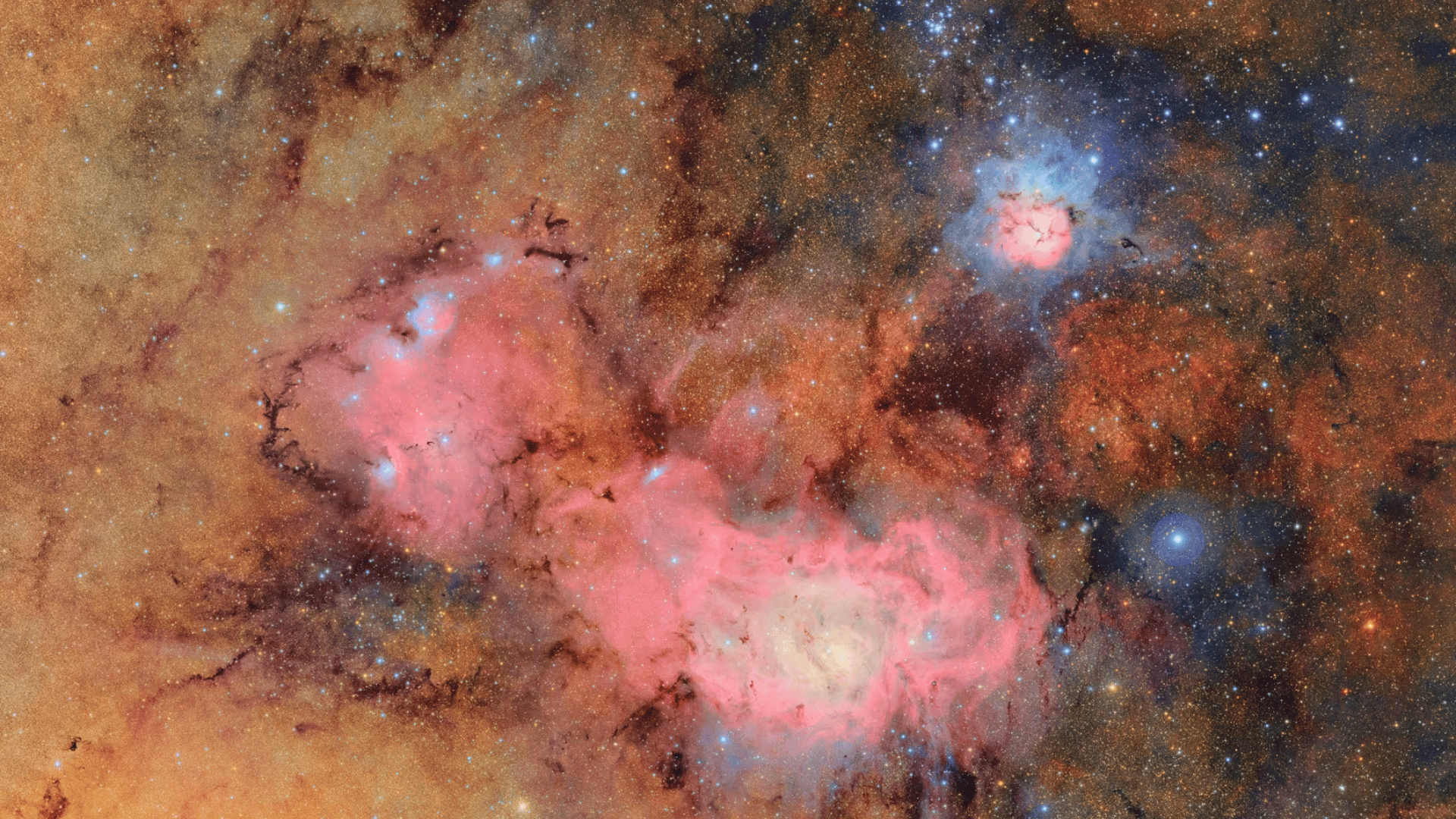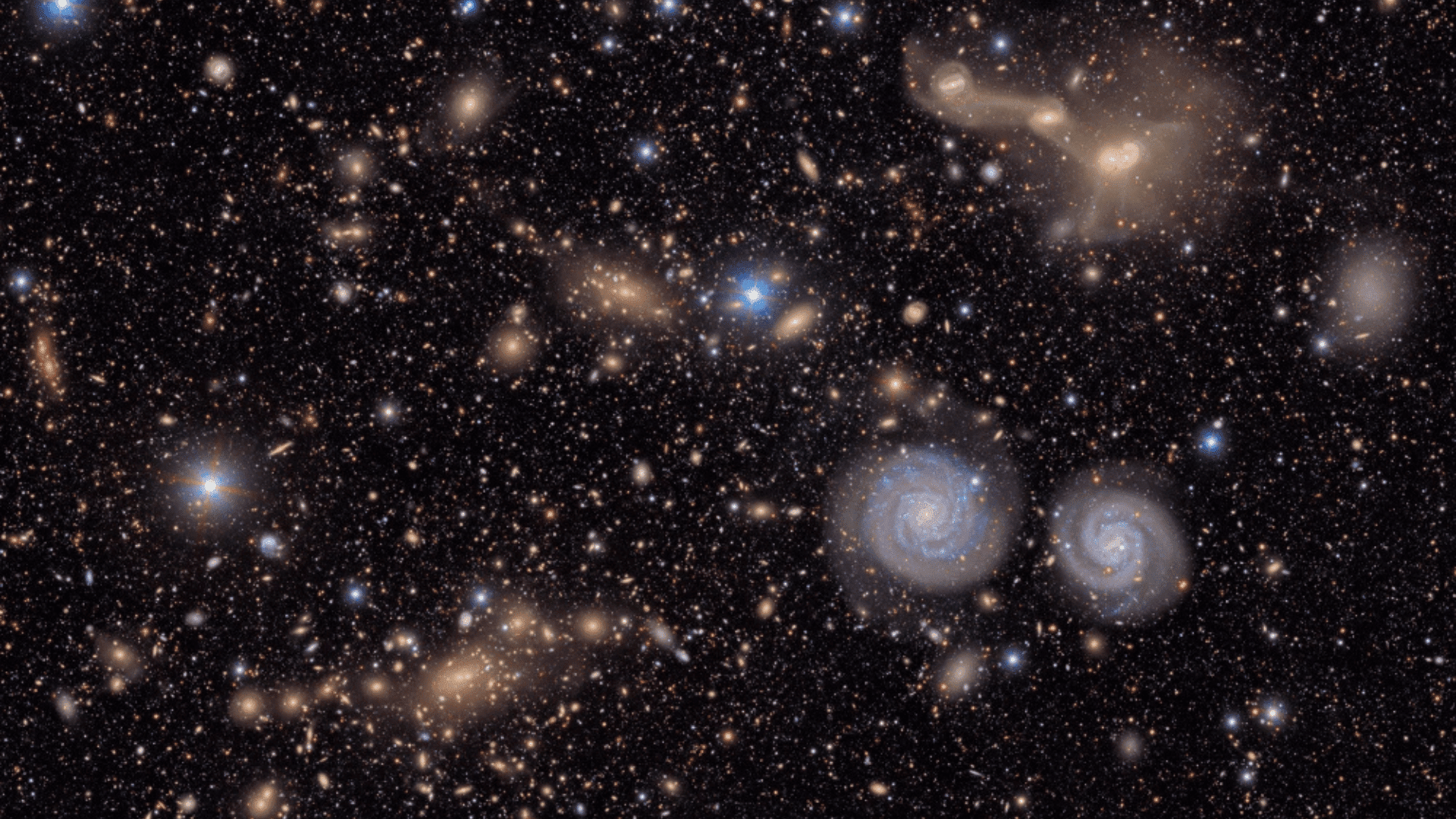The first-ever images taken by the world’s largest digital camera from a new astronomical observatory have been released, revealing the universe in new and spectacular detail.
The Universe From the World’s Largest Digital Camera

One image, which combines 678 separate images taken by the Vera C. Rubin Observatory in just over seven hours, showcases bright pink clouds of dust and gas illuminating the Lagoon and Trifid nebulae, which are positioned several thousand light years away from Earth. Another image displays a plethora of galaxies and stars, including three galaxies merging and colliding.
The camera system also uncovered a series of new asteroids, including 2,104 within our own solar system and seven near-Earth asteroids. Luckily, the newly found near-Earth asteroids should pose no danger to our planet.
The images and videos represented over 10 hours of test observations from the Vera C. Rubin Observatory. One of the images even shows images from our own galaxy alongside distant galaxies that are billions of light years away.
Keith Bechtol, an associate professor in the physics department at the University of Wisconsin-Madison who has been involved with the Rubin Observatory for nearly a decade, is the project’s system verification and validation scientist.
“There were moments in the control room where it was just silence, and all the engineers and all the scientists were just seeing these images, and you could just see more and more details in the stars and the galaxies,” Bechtol told NBC News. “It was one thing to understand at an intellectual level, but then on this emotional level, we realized basically in real time that we were doing something that was really spectacular.”

Designed to point and shoot, the camera moves and captures a new part of the sky every 40 seconds. The observatory is designed to take approximately 1,000 images of the Southern Hemisphere sky every night. This means it will cover the entirety of the visible southern sky roughly every three to four nights.
“In fact, for most of the objects that you see in these images, we’re seeing light that was emitted before the formation of our solar system,” Bechtol said. “We are seeing light from across billions of years of cosmic history. And many of these galaxies have never been seen before.”
Researchers say that the new observatory could help resolve some of the universe’s greatest mysteries, including inquiries surrounding dark matter and dark energy. According to AP News, the observatory hopes to image 20 billion galaxies.
These test observations are part of a larger 10-year mission that will scan the sky each night for a decade. Compiling these images could allow researchers to spot visible changes over time, including stars changing brightness, supernova explosions, asteroids moving across the solar system, and mysterious cosmic phenomena.


